Below me stretches a green promontory of jumbled trees bounded by a brilliant blue sea, with a small triangle sailing across it.
I swim a few more meters and this calming panorama continues. And I swim a little more and a little more.
I’m in the longest infinity pool in Europe, at 105m it’s longer than the Olympic Games pools, on the roof of the new Petram Resort in the north-west corner of Croatia.
It’s not the only swimming on offer at Croatian Istria’s latest resort, which features elegant, simple apartments (where children and pets are welcome), tennis courts, a spa and a rooftop restaurant overlooking the Gulf of Trieste.
There’s a garden pool that’s almost as big and just a three-minute walk (or ride in the hotel buggy) to the silky, crystal-clear waters of the Adriatic.
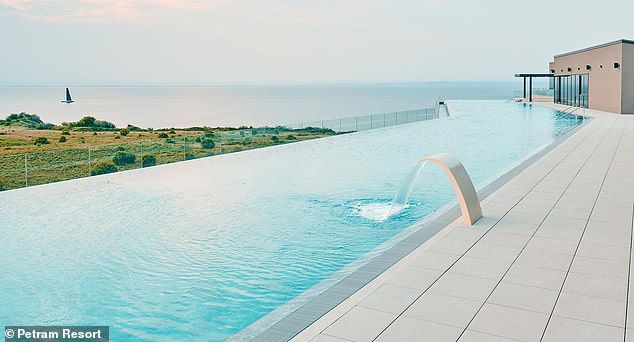
Juliet Rix checks into the new Petram Resort, which is home to Europe’s longest infinity pool (pictured), measuring 105 meters long. The resort is located in Istria, a peninsula in the northwest of Croatia.
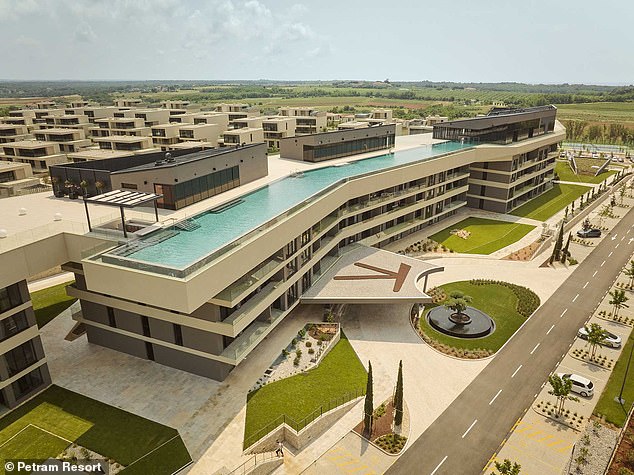

The pool is “longer than the Olympic pools” and is located on the roof of the hotel.
There are swimming areas along this rocky coast and the sea is warm enough for swimming from June to the end of October.
“People used to come here mainly to swim,” says winemaker Moreno Coronica, as we sit a few minutes’ drive from Petram, surrounded by red-earth vineyards his family has farmed for generations.
“And then they can drink some wine, but now it’s also a food destination.”
Indeed it is, with Michelin-style menus at gastropub prices.
Almost everything here is bilingual. This area was ruled by Italy (ancient Rome, medieval Venice, modern Rome) for about half of the last two millennia.
Ancient Rome can take some of the credit for Istria’s culinary successes, as it introduced the cultivation of grapevines and olive trees.
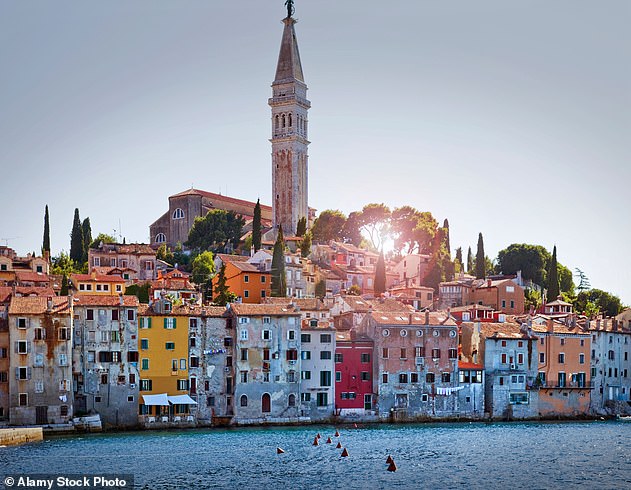

Colorful: Juliet says the region’s scenic coastal centers, such as Rovinj (pictured), are worth a visit
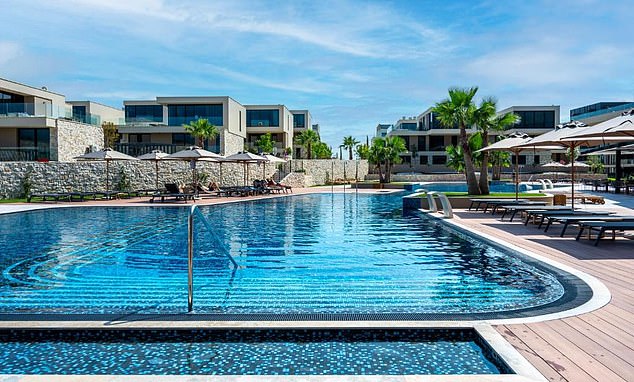

Above, Petram’s garden pool, just a three-minute walk from the waters of the Adriatic.
Excellent olive oil graces almost every table, and I have fun learning to taste it properly (in front of the tongue, then suck air between my teeth and wait for the flavor).
The Romans also left a stronger legacy: in the peninsula’s largest city, Pula (1.5 hours from Petram), dominated by the arched, honey-colored stone ellipse of its well-preserved gladiatorial arena.
The departure of the Italians when this area became part of communist Yugoslavia in 1945 turned many places into ghost towns, but some have since found a new life and are worth a visit, as are the coastal scenic centers of the region , as tourist favorites. Rovinj.
When I arrive in Groznjan, Mozart floats from the massive stone medieval Kastel, now a concert hall. And hidden in the small streets of historic houses adorned with flowers are some 30 studio galleries. This colorful artists’ colony is small, but there’s no need to rush.
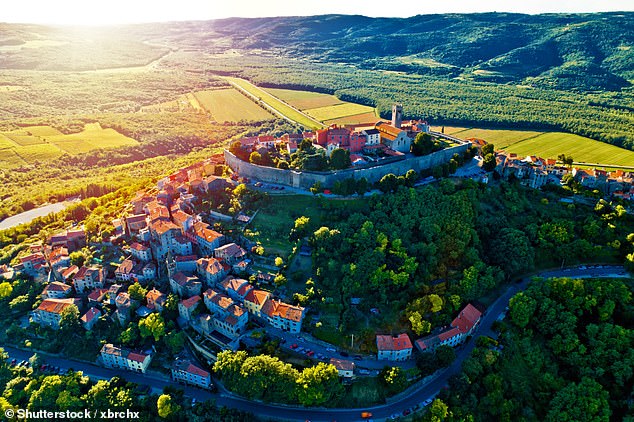

Juliet visits Motovun (pictured), the best preserved Venetian fortified town in Istria
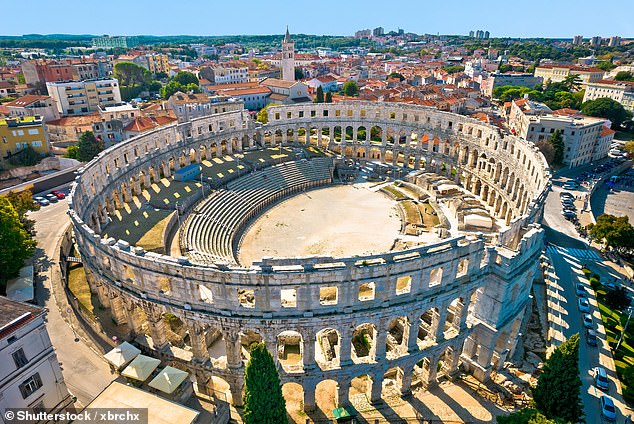

Above: The ruins of a Roman amphitheater in Pula, the largest city on the peninsula.
A couple of hills away is Motovun. With a height of 277 meters and some 1,000 medieval stone steps (don’t worry, there’s a road too), this is the best preserved Venetian fortified town in Istria.
I pass the Palladian Renaissance church and its 13th-century bell tower, originally a defensive watchtower said to have been shaken by the frustration of the city’s legendary largest resident, Giant John, the subject of a nearby mural. I wander around the city walls and enjoy views of the Motovun Forest, which used to supply wood to the Venetians.
Today it is equally appreciated for truffles. I meet truffle hunter Nikola at the edge of the Livade forest, the self-proclaimed “world truffle center.” Black truffles, he says, are mushrooms that can be grown all year round, but white ones are autumnal, wild and tremendously expensive. The most expensive, a huge 1.5kg specimen, sold for £237,000 in 2007.
“We may not find anything,” says Nikola, as his dog Zara begins to sniff the ground. Instantly, Nikola is on his knees, his head pressed against hers, digging frantically.
Moments later, he sits up, incredulous. In his palm is a white truffle of considerable size. It breaks, halving its value, but it will taste the same. But would I pay a lot for it in a London restaurant, without having fun watching the dog sniff it?
I’d rather spend it traveling to Istria and having the truffle served to me along with history, music, art, wine, olive oil, stunning landscapes and swimming.
